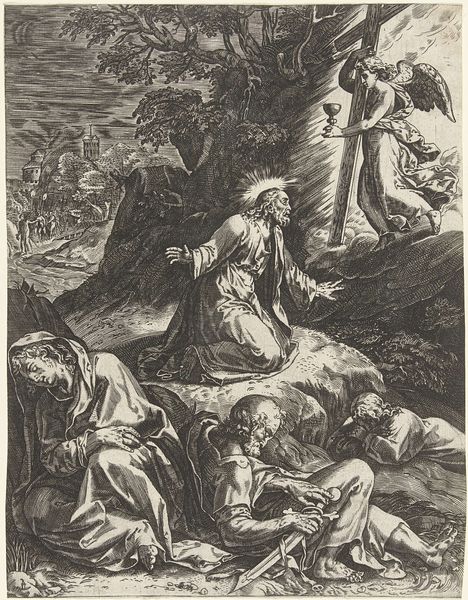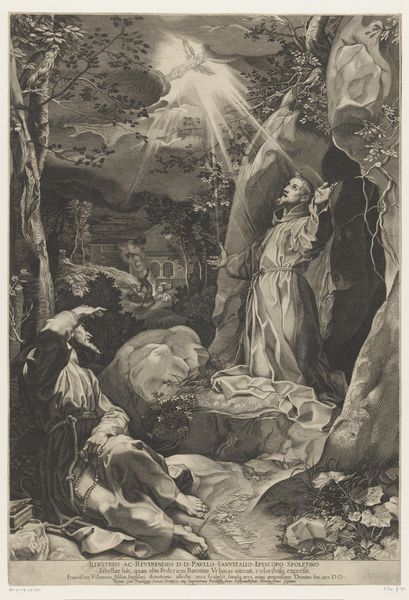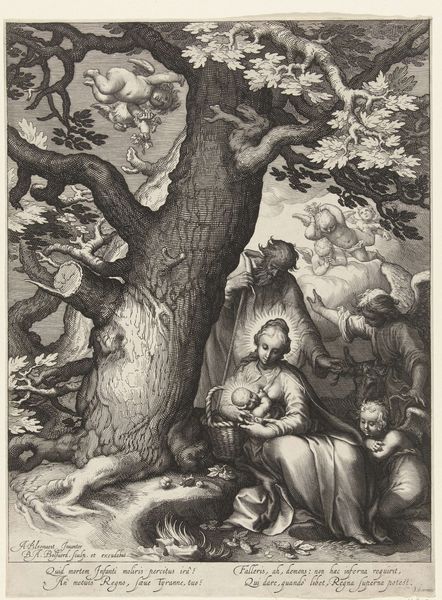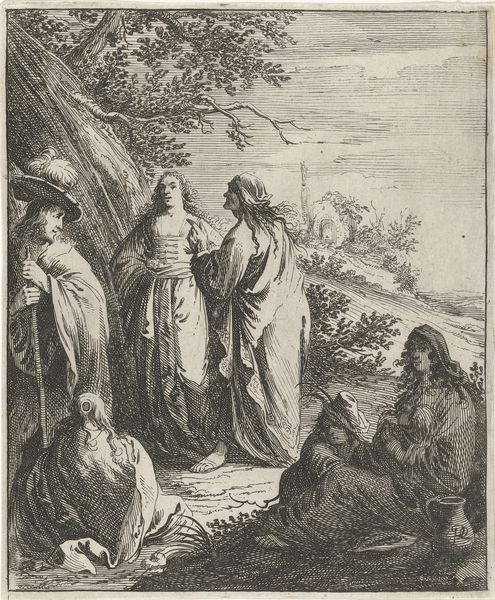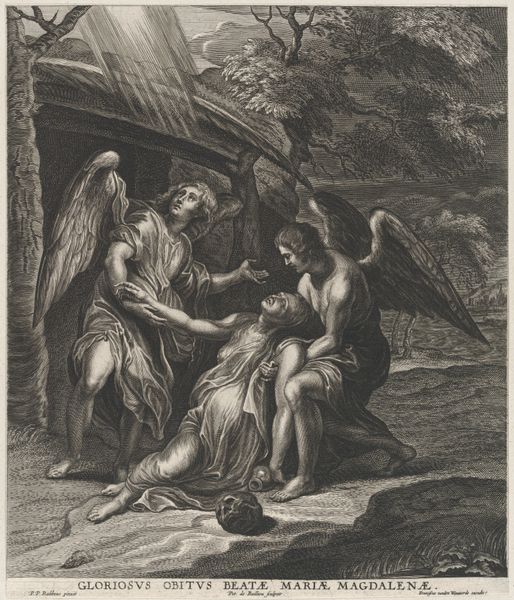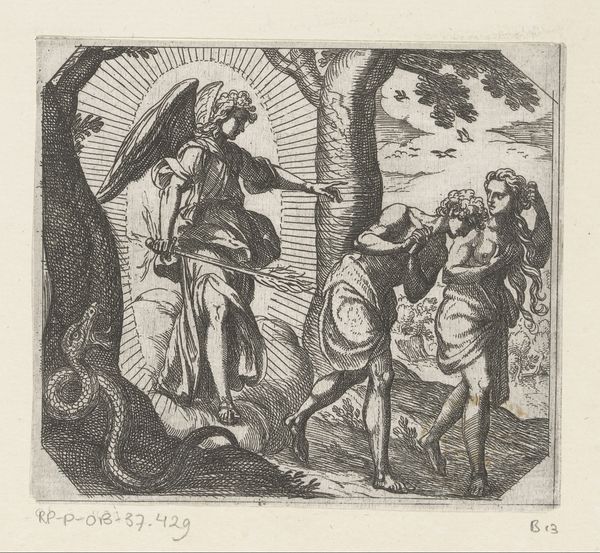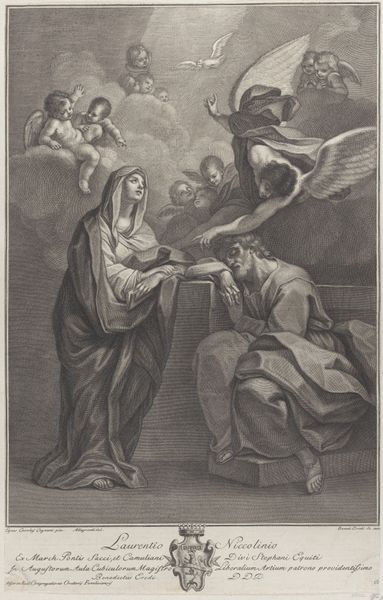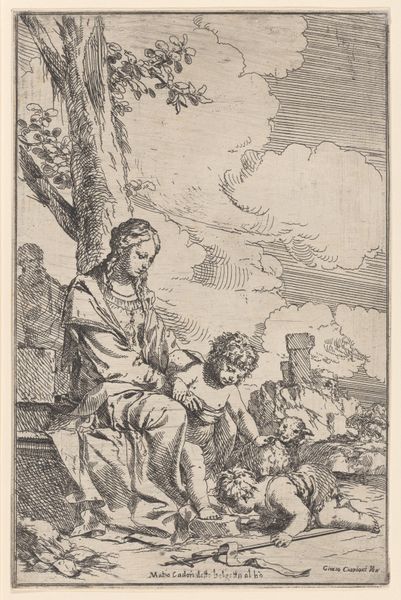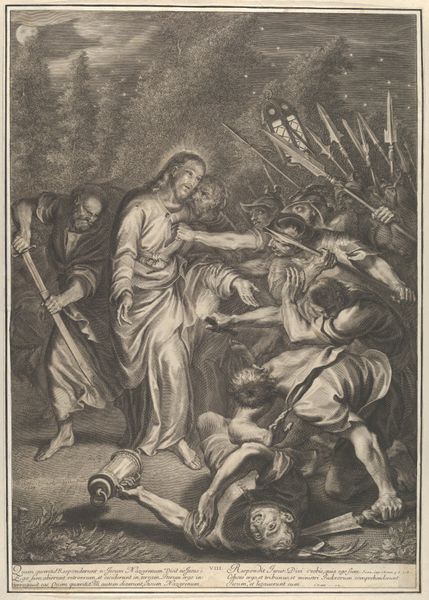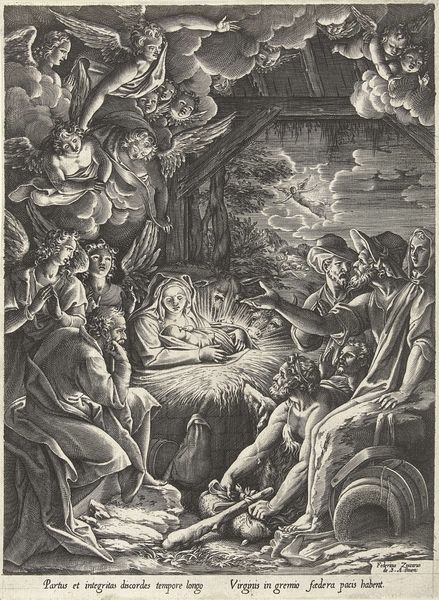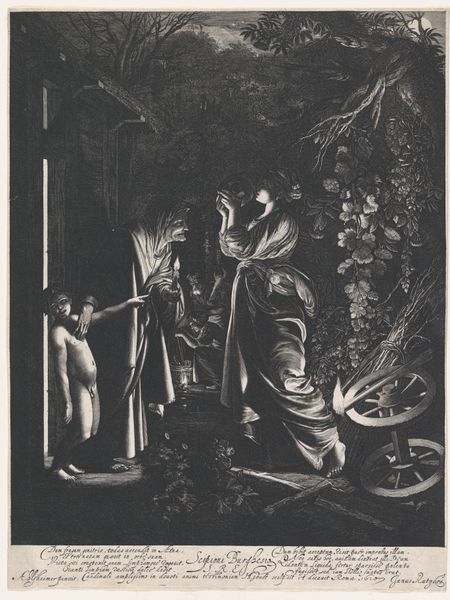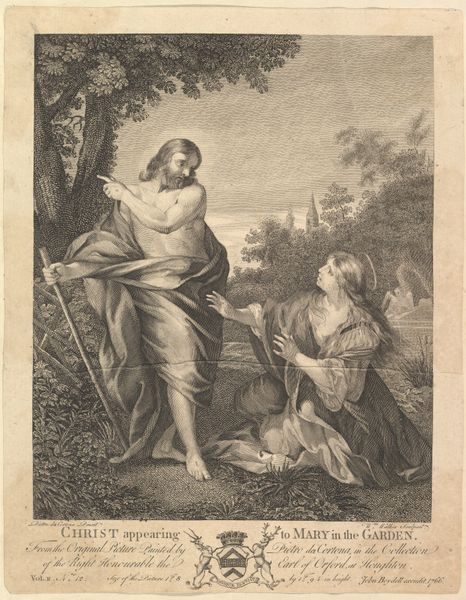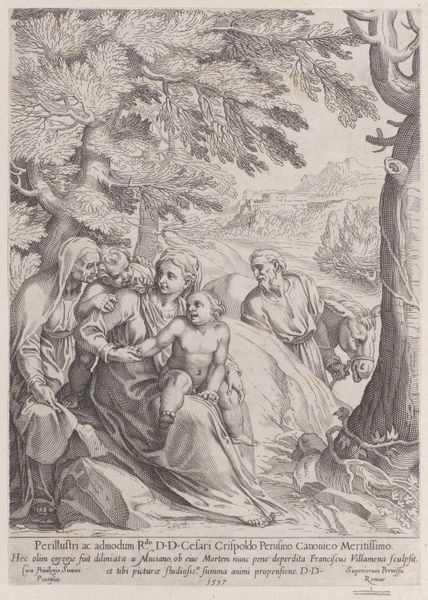
print, etching
#
narrative-art
#
baroque
# print
#
etching
#
history-painting
Dimensions: height 384 mm, width 295 mm
Copyright: Rijks Museum: Open Domain
Curator: This etching, "Christus op de Olijfberg" by Nicolaes Lastman from 1608, is quite striking. The etching depicts a well-known narrative scene. What are your initial impressions? Editor: It feels very dramatic, almost theatrical. There's Christ in agony, angels hovering above, and his disciples scattered and asleep. How do you interpret this work within its historical context? Curator: I'm immediately drawn to how Lastman uses the scene to address questions of power, obedience, and personal conviction within the sociopolitical structures of 17th-century Europe. How might the representation of Christ's submission relate to contemporary anxieties about religious authority? Do you think the choice to depict the disciples asleep might signify a commentary on the broader population's ignorance or apathy towards societal issues? Editor: That's a compelling point! I hadn't considered it in that light. It's easy to just see it as a biblical scene, but thinking about it as a reflection on contemporary power dynamics is eye-opening. Are the angels figures of consolation or commentary? Curator: The ambiguity is deliberate, I think. Angels appear but Christ suffers alone. This engraving reflects religious doctrine, of course, but how do you see that interacting with period ideas about politics and human destiny? Does Lastman take a stand on human destiny or action here? Editor: This engraving encourages viewers to contemplate historical art as a vehicle for social discourse. Curator: Precisely. Works such as this provide insights into cultural issues concerning religious power and social participation in the artist's time.
Comments
No comments
Be the first to comment and join the conversation on the ultimate creative platform.
